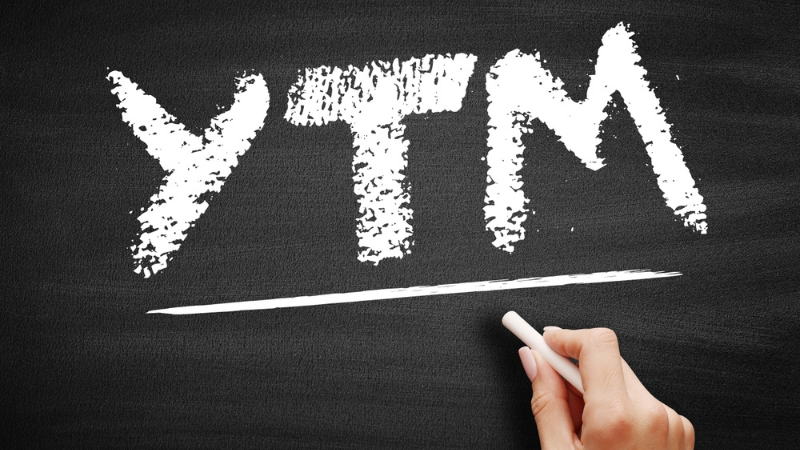
When you invest your income in an investment scheme, the goal should not only be to save your money but also to look for a scheme that will offer you certain tax benefits. Voluntary Provident fund (VPF) is one such scheme that lets you enjoy tax exemptions.
Are you wondering why is it so important to look for tax exemptions while investing? Well, you should know that in India if your annual income is 2.5 lakh rupees or more you fall under the tax bracket and your income is taxable. However, when you invest a significant amount of your money in certain schemes you get tax breaks in the form of tax exemptions that reduce your taxable income or make it completely exempt from taxes.
Voluntary Provident Fund (VPF) is a great investment option for salaried employees, which offers high returns with significant tax exemptions. If you are wondering how VPF can help you reduce your taxes, this article is definitely for you.
Through this article, we will have a brief look at the Voluntary Provident fund and the tax exemptions offered by it.
What is Voluntary Provident Fund (VPF)?
If you are a salaried employee, you must probably be already aware of the Employees’ Provident Fund (EPF) through which both the employee and the employer have to make contributions to the EPF account. The contribution made by you as an employee is a mandatory 12% of your salary.
Voluntary Provident Fund (VPF) is an extension of this EPF account. The contributions you make to the VPF account are voluntary and are beyond the 12% that you make with EPF. with a VPF account you can contribute as much percentage of your salary as you want but enjoy same returns and benefits as a EPF scheme.
However, as opposed to the Employees’ Provident Fund (EPF) in which the employer’s contribution is equivalent to yours, the contribution of the employer through Voluntary Provident Fund (VPF) is restricted and the maximum contribution is of the employee. But, the benefits of this are that whatever contributions you make to the VPF account are eligible for tax deductions under Section 80C of the Income Tax Act, 1961. Through your contribution to the VPF account you can enjoy significant tax benefits as well.
Tax exemptions available to VPF contribution
Who doesn’t want to enjoy tax exemptions while also securely investing their money? We are sure you all do. Although we follow rules and pay our taxes on time, let’s just be honest and admit that we all at some point think they are a bit much for our liking. If you feel the same and are looking for a scheme that offers you significant tax exemptions, Voluntary Provident Fund (VPF) is the way to go.
You can enjoy tax deductions of up to 1.5 lakh rupees through your contributions to the Voluntary Provident Fund (VPF). In addition to this, you also save about Rs 46,800 in your taxes per year (for those in the highest tax bracket). This makes the Voluntary Provident Fund (VPF) a good tax-saving investment option for salaried employees who are eligible to open the VPF account.
Apart from the tax deductions that you enjoy on your VPF account as applicable by Section 80C of The Income Tax Act, 1961 there are a few more tax benefits that you can enjoy by investing in the Voluntary Provident Fund (VPF).
You earn an interest of 8.5 % on the VPF account and this interest is tax free. Also if you make any withdrawals after a period of five years, the withdrawals are not taxable. Only the withdrawals made within the five years are taxable.
As the Voluntary Provident Fund (VPF) scheme offers more returns while giving you significant tax exemptions than any other government managed schemes, the VPF is a great option of investment for tax saving.
Benefits of Voluntary Provident Fund
Some of the benefits of Voluntary Provident Fund (VPF) in India are:
- Safe investment option: VPF is a government-backed scheme that does not involve much risk compared to other long-term investment options offered by private organizations.
- High rate of interest: VPF offers the same interest rate as EPF, which is currently 8.5% per annum. This is higher than most other fixed income instruments such as bank FDs, PPF, etc.
- Tax benefits: VPF falls under the EEE category, which means the contributions, interest and withdrawals are exempt from tax. However, withdrawals before 5 years of completion are taxable. The contributions are eligible for deduction up to Rs. 1.5 lakh under Section 80C of the Income Tax Act.
- Flexible contribution: VPF allows the employee to voluntarily contribute any amount over and above the mandatory 12% of basic salary and DA towards EPF. The maximum contribution can be up to 100% of basic salary and DA.
- Easy transfer and withdrawal: VPF can be transferred from one employer to another upon changing jobs. It can also be partially or fully withdrawn subject to certain conditions and charges. The withdrawal can be done online through the EPFO portal.
VPF Eligibility Conditions
Some of the VPF eligibility conditions are:
- The investor must be a salaried employee who receives a monthly salary in his/her salary account.
- The employee must have an active EPF account as VPF is an extension of EPF and no separate account is maintained for VPF.
- The employee must inform his/her employer about the voluntary contribution towards VPF and fill a registration form.
- The employee can contribute any amount over and above the mandatory 12% of basic salary and DA towards EPF, up to a maximum of 100% of basic salary and DA.
Do the Changed Taxation Rules Affect VPF?
As we all know, the government of India has changed the Tax rules that are applicable from April 2021. These changes in tax rules have also changed the taxation rules for Voluntary Provident Fund (VPF). Now the interest earned for contributions over Rs 2.5 lakhs in a year will get taxed. However, if there is no employer contribution to the VPF, interest on contribution till Rs 5lakh is tax free.
However, even with the changes in the taxation rules, experts believe that the Voluntary Provident Fund (VPF) is still a great option as far as investments and tax saving schemes go. As compared to other government backed and managed schemes like bank fixed deposits or Public Provident Fund (PPF), the Voluntary Provident Fund (VPF) offers higher returns and higher tax benefits.
So even with the change in tax rules, Voluntary Provident Fund (VPF) is still a great option for those who are eligible, if you are looking for an investment scheme through which you can enjoy significant tax exemptions.
FAQs
- Are your contributions to the Voluntary Provident Fund (VPF) eligible for tax exemptions?
Yes, your contributions to the Voluntary Provident Fund (VPF) are eligible for tax exemptions as applicable by Section 80C of the Income Tax Act, 1961. These deductions are reduced from your total taxable income and this helps you in tax saving.
- Why is Voluntary Provident Fund (VPF) a better option for tax exemptions than other investment schemes?
Voluntary Provident Funds (VPF) fall under the EEE category, that is exempt on contribution, exempt from principal and exempt on interest. This means you enjoy tax benefits on investment and there are no taxes applicable if you withdraw your accumulated amount after five years of investment.
- What are the tax deductions that the Voluntary Provident Fund (VPF) offer?
Voluntary Provident Funds (VPF) offer tax deductions upto 1.5 lakh rupees as stated by Section 80C of The Income Tax Act, 1961. Through Voluntary Provident Fund (VPF) scheme you can save upto Rs 46,800 on your taxable income.
- Does the change in tax rules affect the Voluntary Provident Fund (VPF)?
Even though the tax rules have changed as of April 2021, experts believe that the Voluntary Provident Fund (VPF) is still a better investment and tax saving option as it offers higher returns as compared to the other government-managed schemes.


























